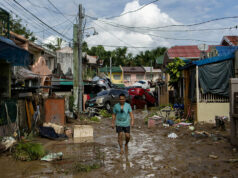Fresh RRR cut to boost lending, economy

THE SURPRISE reserve requirement ratio (RRR) cut announced on Thursday by the central bank will free up more funds for loans, which can help boost the economy, according to Bankers Association of the Philippines (BAP) and Bank of the Philippine Islands (BPI) President Cezar P. Consing.
In a media briefing on Thursday at the inauguration of BPI’s largest branch located in Makati, Mr. Consing also welcomed the RRR reduction as a move by the Bangko Sentral ng Pilipinas (BSP) to catch up with regional peers’ reserve ratios which are much lower.
“I think all banks would benefit because there’ll be an opportunity to make more money available… There’s more loanable funds essentially,” he said.
The BSP cut banks’ RRR for the fourth time this year, with the latest reduction to take effect in December.
In a statement on Thursday, the BSP said its policy-setting Monetary Board (MB) decided to slash the RRR of universal, commercial and thrift banks by another 100 basis points (bp), bringing total reductions to their reserve ratios for this year to 400 bps.
The MB said the cut will also apply to the reserve ratio of non-bank financial institutions with quasi-banking functions.
This latest cut will follow a 100-bp reduction in all banks’ RRR announced on Sept. 27 which takes effect next month and will bring the reserve ratio of universal and commercial lenders to 14% by December, while the RRR of thrift banks will stand at four percent.
Meanwhile, the reserve ratio of rural banks, which will go down to three percent next month, was untouched.
On the other hand, the reserve ratio of NBQBs will be cut to 14% by December.
Mr. Consing expects banks to see their lending activity pick up, supported by the catch-up in government spending.
“I think you saw lending slow down a little bit, partly because the budget was a little late… But my sense is that the government is trying very hard to catch up on the spending side. And so what happens is when the government spends money, especially the infrastructure? The private sector tends to follow,” he said.
“We are now closer to aligning our reserve ratios with the other countries in the region. I think it also reflects the governor’s confidence in the strength of the financial system. Even at the lower rates of [RRR], it’s still higher [compared to the region]. But I think his [BSP Governor Benjamin E. Diokno’s] plan is to gradually bring it down,” Mr. Consing added.
In a note sent to reporters, ING Bank N.V.-Manila Senior Economist Nicholas Antonio T. Mapa said lending activity remains anemic despite the previous rounds of RRR cuts amid a capital formation meltdown.
“Select prominent analysts have tagged the weakness in bank lending to CFOs holding off on investing as they “wait for rates to hit rock bottom”. Thus, successive rounds of RRR reductions will do little to insulate PHL growth momentum unless accompanied by the right tool to provide the economy a nice shot in the arm going into 2020,” Mr. Mapa said.
BSP data showed that domestic liquidity or M3 grew 6.2% year-on-year to P11.9 trillion, slowing from the 6.7% growth print seen in July.
Meanwhile, outstanding loans of universal and commercial banks increased by 10.5% year-on-year in August, slowing from the 11.1% pace logged in July. Inclusive of reverse repurchase agreements, bank lending grew 10% in August from 10.7% the preceding month. — L.W.T. Noble



